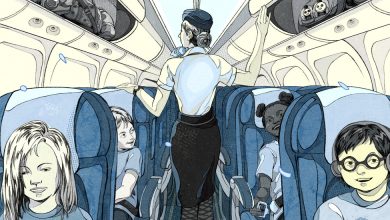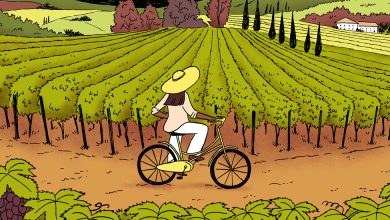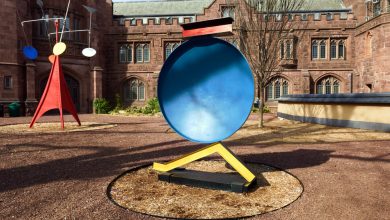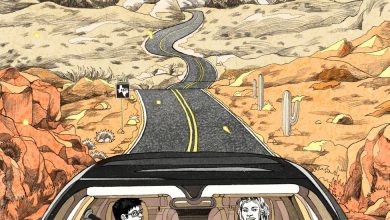Why I’m Still in Love With Waikiki
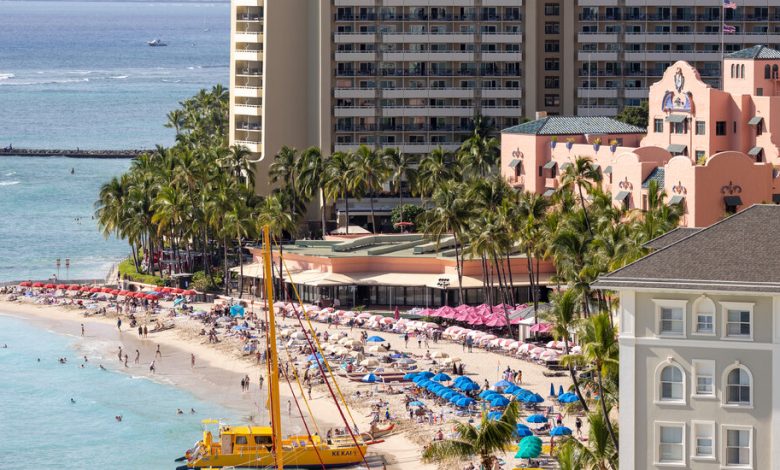
Since my first trip to Waikiki Beach in 1977, I have traveled all around the Hawaiian Islands. And I’ve loved each one. But I love Waikiki, too.
Not the hordes of tourists, of course, or the high-end shopping malls that have taken over Kalākaua Avenue and earned it the nickname, Vegas on the Beach. What I love are the remnants of a different Waikiki, a beautiful, tropical paradise that inspired songs and movies and dreams and romance. When I come here, with some time and patience, I can still find that Waikiki.
Lately, it’s become fashionable to dismiss Waikiki as a playland for tourists and not the “real” Hawaii. When I posted pictures of a gorgeous sunset and the waves crashing on Waikiki Beach on social media last March, I got vehement comments like: “Get out of there and see the real Hawaii!”
And: “Here’s where you should be …”
And: “Ugh. Waikiki.”
But Waikiki is no less the real Hawaii than anywhere else, said T. Ilihia Gionson, the public affairs officer for the Hawaii Tourism Authority. “From the beginning, Waikiki has been a very special place that captured the hearts and souls of many,” he said. “The land is the land, and it will always have that certain energy and life force that comes through, no matter what we put upon it.”
According to Mr. Gionson, in prepandemic 2019, Hawaii had 10.4 million annual arrivals, its highest number ever. Numbers this year are running at about 92 percent of that number, or close to 10 million arrivals. The strain of so many visitors on local neighborhoods led the Hawaiian Tourism Authority to ask themselves how they can do tourism better and reinvest economic resources into communities and resources. With its emphasis on local culture, traditions and products, the Mālama Hawaii campaign, which kicked off in 2021, invites travelers to learn how Hawaiians care for their home.
Waikiki, once home to royalty, was an agricultural center, rich with taro fields and rice paddies, and eventually became a seaside neighborhood for local families. The Māhele, a land distribution plan that changed the islands’ communal system of land ownership to a private one in 1848, brought western land barons and the beginning of tourism with hotels built for wealthy tourists.
With the opening of the luxurious Moana Surfrider in 1901, Waikiki’s reputation as a popular tourist destination began. Promoters advertised many of the things that are still synonymous with Waikiki today — lū’aus, lush leis, and the beach boys who taught water sports. Wealthy businessmen watched crowds emerge from boats onto Waikiki Beach after a six-and-a-half day trip from San Francisco and saw an opportunity to develop these wetlands into a tourist mecca. The Waikiki Reclamation Project drained and dredged Ala Wai Canal and its surrounding fish ponds, taro fields, rice farms and banana and coconut groves, then filled them with material upon which to build hundreds of acres of new hotels and upscale homes.
Old Waikiki was gone — again — and a new Waikiki of luxury hotels and tiki bars emerged. Movies like “Blue Hawaii,”starring Elvis Presley, and singers like Don Ho brought Hawaii into our living rooms. This was the Waikiki I arrived in on a United Airlines Friend Ship, one of 3 million tourists who visited in 1977. As my friends and I disembarked from our flight, where stewardesses in flowered uniforms served us mai tais and macadamia-crusted chicken, saronged women placed plumeria leis around our necks and welcomed us with that magical word, “Aloha.”
Unable to afford a beachfront hotel, we stayed at the Miramar, four blocks from the ocean. But we didn’t care — we were in Waikiki. We bought tatami mats and Hawaiian Tropic suntan lotion at the ABC store and happily walked across the street, through the lobby of a hotel and onto the beach. There was Diamond Head, and surfers and the Pacific Ocean, everything we had hoped for.
When we weren’t sunbathing, we roamed around the International Marketplace, the outdoor market that Don the Beachcomber, the father of tiki culture, opened in 1956, the year we were born. Around the 60-foot-tall banyan tree in the center were kiosks that sold all things tropical and Hawaiian. Jane paid $10 for the chance to find an oyster with a pearl inside. I bought my mother a handwoven grass skirt. Why I thought a middle-aged accountant in West Warwick, R.I., would want a grass skirt, I can’t say. Except that I was bringing Hawaii, a place she would never visit, 5,000 miles to her.
At night, we ate teriyaki sirloins at Chuck’s Cellar and drank overly sweet mai tais at beach bars. In the morning, we ordered all-you-can-eat pancakes at Wailana Coffee House, tucked our tatami mats under our arms, and started all over again.
The Miramar Hotel, Chuck’s Cellar, and the Wailana Coffee House are all gone now. The International Marketplace was completely razed in 2013 and reopened three years later with only the name and the banyan tree remaining. Today, instead of the dangling vines and footbridges, the International Marketplace is a three-story mall with a Burberry shop and a Christian Louboutin.
In many ways, what happened to the International Marketplace represents what has happened to create this newest Waikiki. With an influx of international tourists in the 1990s, high-end retail shops arrived along with more hotels. The well-known San Francisco department store Gump’s, which opened at the corner of Kalākaua Avenue and Lewers Street in 1929, became a Louis Vuitton store in 1992. Thirteen years later, buildings were bulldozed or repurposed to create Luxury Row with stores like Chanel and Gucci.
When I asked the Island-born chef and restaurateur, Ed Kenney, where I could find old Waikiki, his first response was that unfortunately, that Waikiki has been all but lost. Then he gave me recommendations of where to find it.
One way to get there is to walk through a different mall, past the Wolfgang Puck steakhouse and the word Aloha surrounded by lights, until you see a flash of pink through the trees. Follow that pink through a wrought-iron gate into an oasis of grass and trees and the Royal Hawaiian Hotel, called the Pink Palace of the Pacific when it opened in 1927. Immediately, the crowds and noise disappear. Minutes after you check in, you will be under a pink-and-white striped beach umbrella, your toes in white sand. Wander over to the bar for a mai tai, commissioned as a special cocktail for this very hotel and created by Victor Bergeron in 1953, and it is like being back in time.
At sunset, I like to go to the restaurant House Without a Key to sip a pretty pink Table 97 cocktail while the Kapalama Trio sings softly beneath a 135-year-old kiawe tree and the sky turns pink and lavender. The cocktail is named for Ernest Hemingway and Martha Gelhorn’s favorite table when they honeymooned here in 1940, and the restaurant is named for the 1925 novel, “The House Without a Key,” by Earl Derr Biggers, which was the first of a mystery series featuring a fictional Honolulu detective named Charlie Chan. An original copy is on display at the entrance.
It is also worth it to brave the throngs and take a walk down Kalākaua Avenue, past some of the remaining old significant Waikiki architecture. Although most of the iconic buildings were torn down, a surprising number of hidden gems with tropical-motif latticework railings and building decorations remain. Start at the Waikiki Galleria Tower at 2222 Kalākaua Avenue, built in 1966 by the architect George Wimbleyand, then continue around the corner for a 10-minute walk to see the breadfruit design on the wrought iron railings at the Kaiulani Court Apartments at 209 Kaiulani Avenue.
Nearby apartment buildings along Lau’ula Street have railings with surfboards, banana leaves and sails, as well as lava rock walls and cantilevered lanais. Even the new International Marketplace is worth a visit to see that old banyan tree and a replica of Don the Beachcomber’s office with old photographs, menus and advertisements in a treehouse above it.
Skip the lines at the Cheesecake Factory and take a short Uber ride to the Highway Inn, open since 1947, for some lau lau and kalua pig with cabbage and a 25-cent side of raw onion with salt. Or try the Side Street Inn for fried rice, garlic fried chicken and sizzling short ribs. Or have an iconic plate lunch of loco moco, rice and macaroni salad at the Rainbow Drive-in, open since 1961 and affectionately called Rainbows by locals.
Except for the happy hour at the piano bar at the Moana Surfrider, where they make strong real cocktails like martinis and Manhattans, skip the Blue Hawaiis and sugary mai tais at hotel bars. Instead, walk down Saratoga Road, past the tattoo parlor and Eggs and Things (serving eggs with Portuguese sausage or pork chops since 1974) to Arnold’s Beach Bar, a tiny bar that is actually not on the beach, but is full of regulars, like a Waikiki Cheers. If you’re lucky, Brie Brundige will be behind the bar making Arnold’s famous mai tais ($10 here versus $21 or more in hotels) and will share the recipe.
One morning, I woke up early, got a kona coffee and a li hing mango morning bun from the Honolulu Café, and sat on Waikiki Beach. It was quiet and, except for some surfers in the water and a mother and daughter building sand castles, I was alone. The sky was pale pink. The palm trees swayed in the breeze. Diamond Head watched me sitting there. I was smiling, happy in Waikiki. It is still there, if you look hard enough.
Ann Hood’s most recent book is “Fly Girl,” a memoir about her years as a TWA flight attendant.
Follow New York Times Travel on Instagram and sign up for our weekly Travel Dispatch newsletter to get expert tips on traveling smarter and inspiration for your next vacation. Dreaming up a future getaway or just armchair traveling? Check out our 52 Places to Go in 2023.

